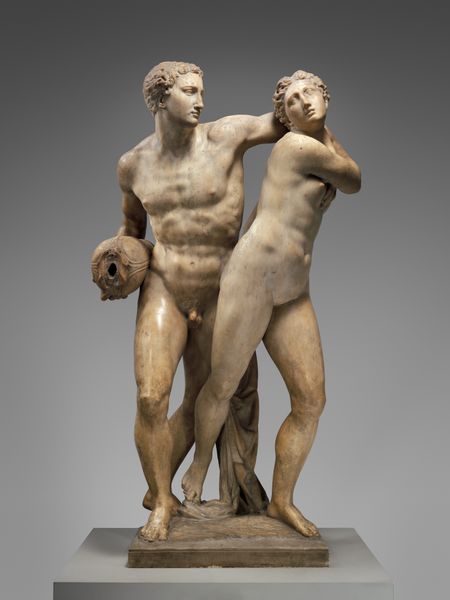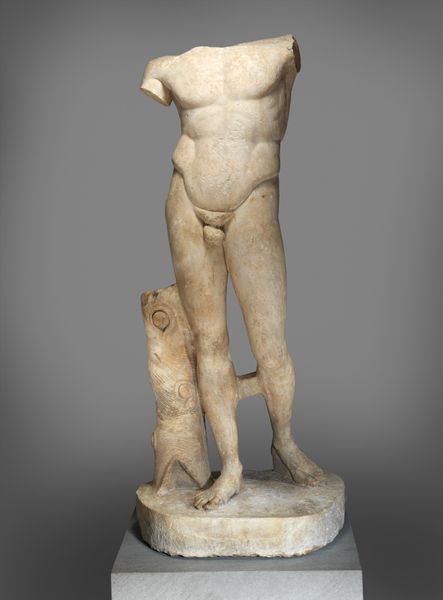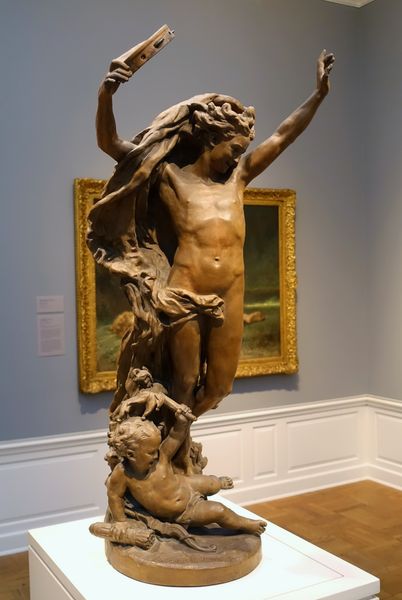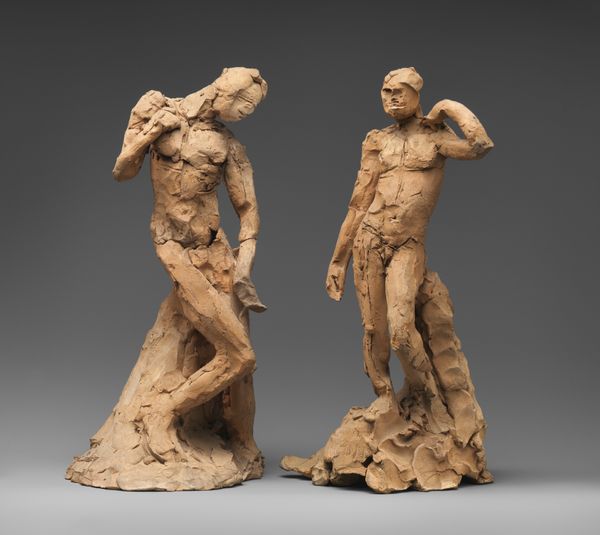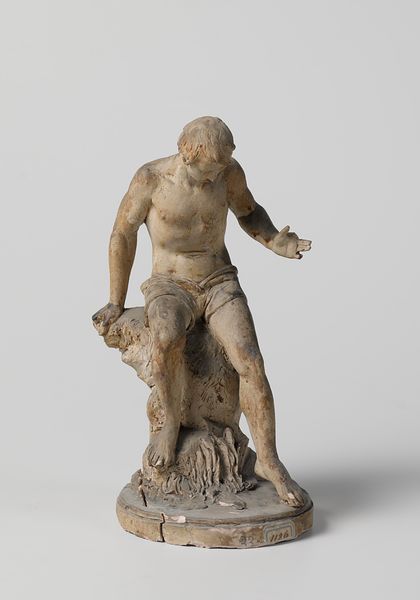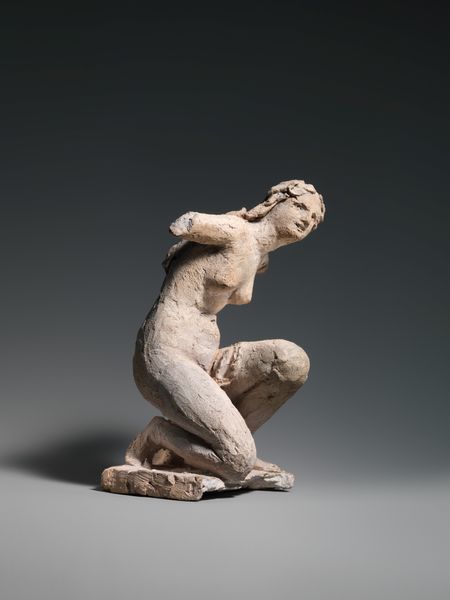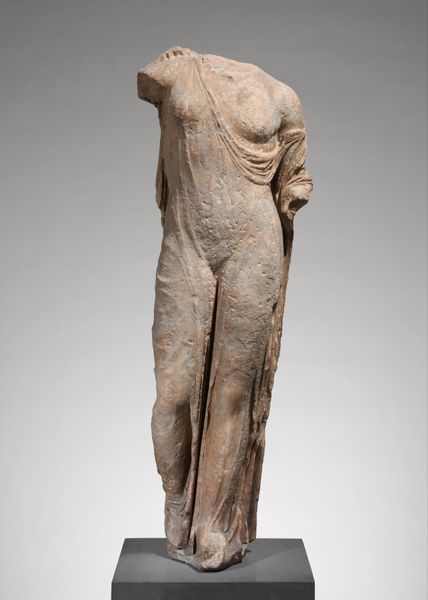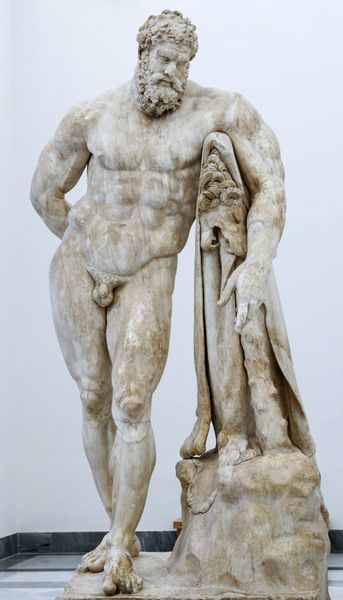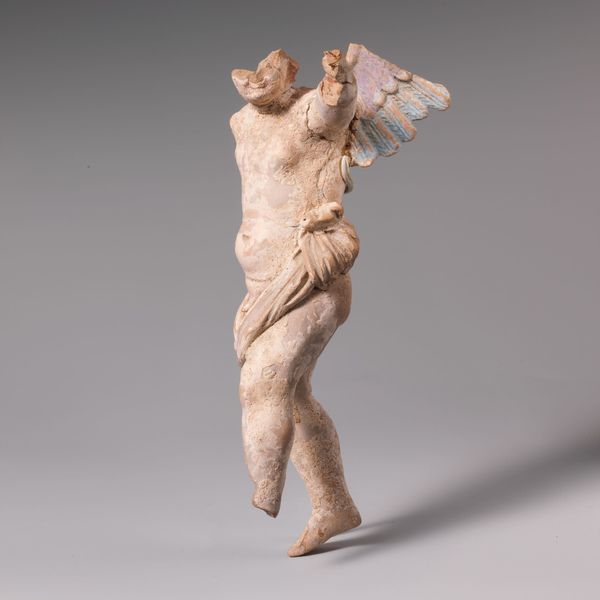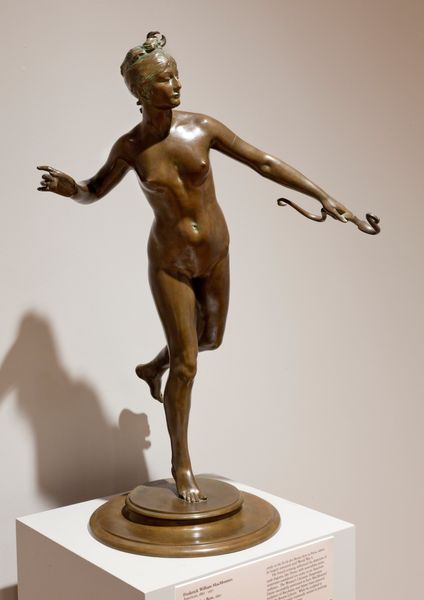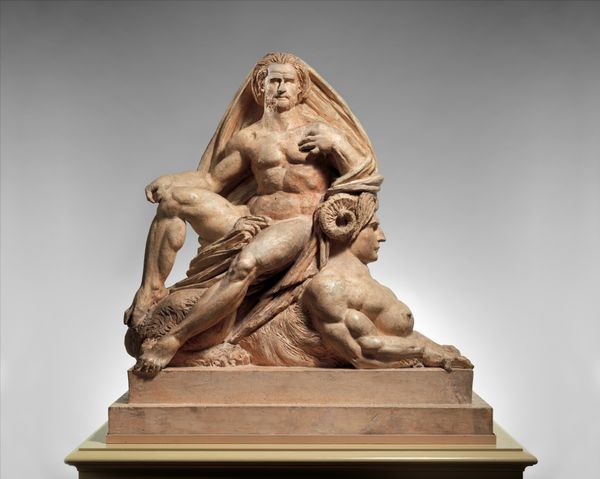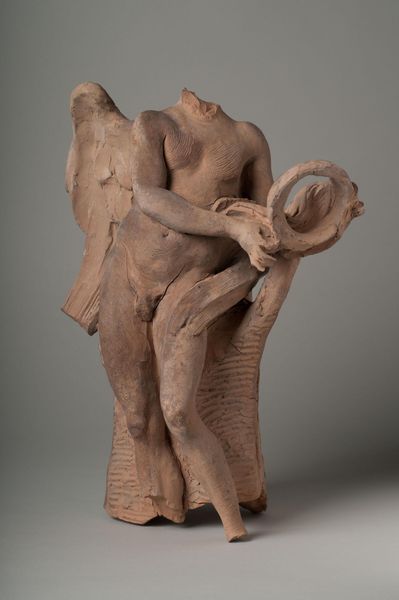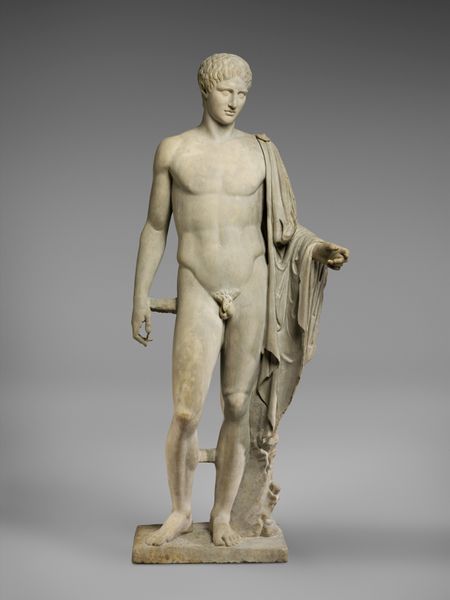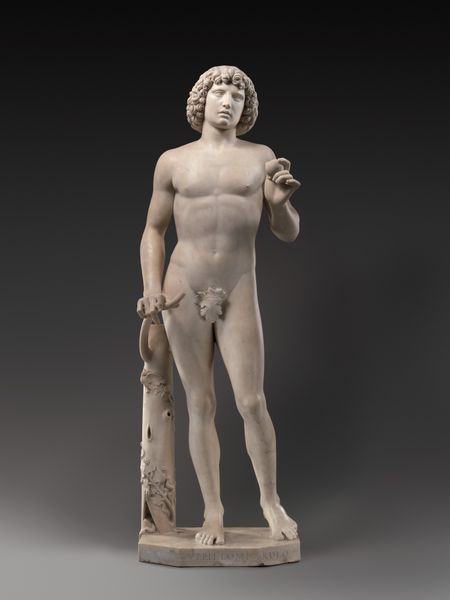
sculpture
#
sculpture
#
greek-and-roman-art
#
classical-realism
#
figuration
#
ancient-mediterranean
#
sculpture
#
history-painting
Copyright: Public domain
Editor: So here we have "The Tyrannicides" by Antenor, dating back to 510 BC. It’s a sculpture of two male figures… powerful, even though time has taken its toll. What strikes you most about it? Curator: You know, what grabs me is the space between them. It's not just a gap; it's a silent scream, a historical wound. One figure is older, bearded, holding what looks like a sheathed sword; the other, younger, arm raised ready to strike. Two sides of a coin – thought and action? The agony and the ecstasy, perhaps? Do you think this placement, so intentional, speaks to the complexities of freedom and the violence sometimes needed to attain it? Editor: It could be... It also feels like such a bold statement for that time, immortalizing this violent act with a certain... heroism? Curator: Precisely! Think about what it meant to memorialize such figures in ancient Athens, the cradle of democracy itself. Was this public art meant as inspiration, warning, or a simple factual claim of tyrannicide? How many viewpoints do you imagine a group of people may develop by only looking at these sculptures? It's heavy, no? Like looking into the soul of a people trying to define themselves, bloody hands and all. Editor: It is heavy. I guess I came expecting some sort of... triumphant sculpture? But I'm leaving with more questions than answers, and that’s somehow more powerful. Curator: Isn't it marvelous when art does that? The past isn't a simple narrative; it's a churning sea, and these figures, forever frozen, invite us to dive in. I appreciate how open your views were when considering those points.
Comments
No comments
Be the first to comment and join the conversation on the ultimate creative platform.
